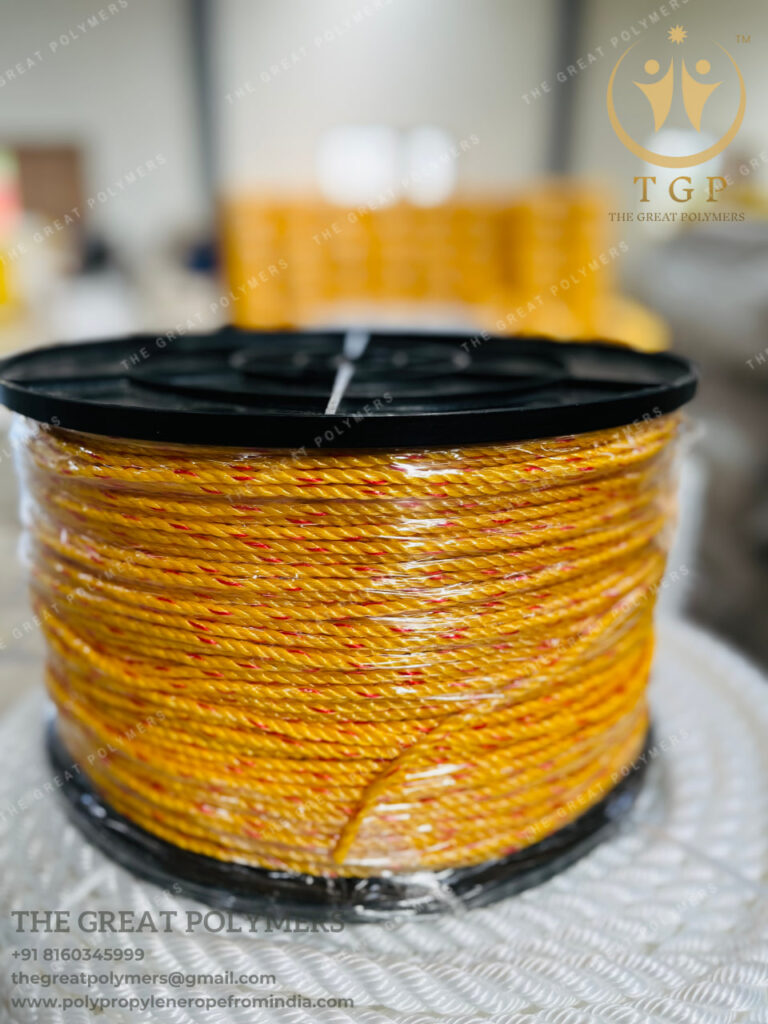Introduction
PP rope, or polypropylene rope, is a versatile and widely used material in various industries due to its strength, durability, and resistance to environmental factors. From the marine and fishing sectors to agriculture and sports, PP rope is a crucial component that ensures reliability and efficiency. But have you ever wondered how this essential product is made? Let’s dive into the detailed process of PP rope manufacturing.
Raw Materials Used in PP Rope Manufacturing
Polypropylene: The Primary Ingredient
Polypropylene is a thermoplastic polymer that serves as the foundation of PP rope. It is known for its high tensile strength, resistance to abrasion, and low density, making it an ideal material for rope production.
Additives and Colorants
To enhance the properties of the rope, manufacturers often add stabilizers, UV inhibitors, and colorants. These additives help improve the rope’s performance under various conditions, such as prolonged exposure to sunlight or harsh chemicals.
Step-by-Step Manufacturing Process
Extrusion Process
The first step in the manufacturing process is extrusion. Here, polypropylene pellets are melted down in an extruder, a machine that heats the material to its melting point.
Melting Polypropylene
In the extruder, polypropylene pellets are subjected to high temperatures, causing them to melt and form a thick, viscous liquid.
Forming Filaments
Once melted, the polypropylene is forced through spinnerets, which are devices with tiny holes. As the melted polypropylene is pushed through these holes, it forms long, continuous filaments.

Spinning Process
After extrusion, the filaments undergo a spinning process.
Cooling and Solidifying
The freshly extruded filaments are rapidly cooled in a water bath, causing them to solidify into thin strands.
Twisting Filaments into Strands
These solidified strands are then twisted together to form thicker, stronger threads. The degree of twisting can vary depending on the intended use of the rope.
Twisting and Braiding
The twisted strands are further processed to create the final rope.
Types of Twists
Manufacturers can use different twisting techniques, such as S-twist or Z-twist, to achieve the desired rope characteristics.
Braiding Techniques
For added strength and flexibility, strands are often braided together. Braiding involves interweaving multiple strands in specific patterns, resulting in a robust and flexible rope.
Quality Control in PP Rope Manufacturing
Quality control is a critical aspect of PP rope manufacturing, ensuring that the final product meets industry standards.
Testing for Strength and Durability
Ropes are subjected to rigorous testing to ensure they can withstand significant stress and strain without breaking.
Ensuring Uniformity in Diameter
Uniformity in diameter is essential for the rope’s performance. Manufacturers use precise measurements and adjustments to maintain consistent thickness throughout the rope.
Environmental Considerations
Recycling of Polypropylene
Polypropylene is recyclable, and many manufacturers are adopting recycling practices to minimize environmental impact. Recycled polypropylene can be reprocessed and used to produce new ropes.
Reducing Manufacturing Waste
Efforts are also made to reduce waste during the manufacturing process. This includes optimizing production methods and reusing offcuts and scraps.
Innovations in PP Rope Manufacturing
Advancements in Material Science
Recent advancements in material science have led to the development of stronger and more durable polypropylene blends, enhancing the performance of PP ropes.
Automation in Manufacturing
Automation has revolutionized PP rope manufacturing, increasing efficiency and consistency while reducing labor costs.
Applications of PP Rope
Marine and Fishing Industry
PP rope is widely used in the marine and fishing industries due to its buoyancy and resistance to saltwater corrosion.
Agriculture and Farming
In agriculture, PP ropes are used for tasks such as tying and securing crops, as well as creating support structures for plants.
Sports and Recreation
From climbing ropes to gym equipment, PP ropes are popular in sports and recreational activities for their strength and reliability.
Advantages of Using PP Rope
Strength and Durability
PP rope is known for its high tensile strength, making it capable of handling heavy loads without breaking.
Resistance to Chemicals and UV Light
PP rope’s resistance to chemicals and UV light makes it ideal for outdoor use, as it can withstand harsh environmental conditions without degrading.
Disadvantages of PP Rope
Susceptibility to Heat
One drawback of PP rope is its susceptibility to heat. High temperatures can cause the rope to melt or lose its structural integrity.
Environmental Impact
While polypropylene is recyclable, the production and disposal of PP rope can still have environmental impacts if not managed properly.
Maintenance and Care of PP Rope
Proper Storage Techniques
To extend the life of PP rope, it should be stored in a cool, dry place away from direct sunlight and heat sources.
Cleaning and Inspecting Ropes
Regular cleaning and inspection are essential to maintain the rope’s performance. Dirt and debris can be removed with mild soap and water, and any signs of wear or damage should be addressed promptly.
Future Trends in PP Rope Manufacturing
Sustainable Practices
The industry is moving towards more sustainable practices, including the use of eco-friendly materials and production methods that reduce environmental impact.
Development of Biodegradable Options
Researchers are exploring biodegradable alternatives to traditional polypropylene, aiming to create ropes that offer the same performance while being more environmentally friendly.
Conclusion
The PP rope manufacturing process is a complex and highly specialized operation that involves various stages, from melting and extruding polypropylene to twisting and braiding the final product. Quality control ensures that the ropes meet stringent standards, while innovations and environmental considerations continue to shape the industry’s future. As demand for durable and reliable ropes persists across multiple sectors, the importance of PP rope remains undeniable.
FAQs
What is PP Rope made from?
PP rope is made from polypropylene, a thermoplastic polymer known for its strength and durability.
How strong is PP Rope?
PP rope is exceptionally strong and can handle significant stress and loads, making it suitable for various heavy-duty applications.
Can PP Rope be recycled?
Yes, polypropylene can be recycled, and many manufacturers incorporate recycled materials into their production processes.
What are the common uses of PP Rope?
Common uses of PP rope include marine and fishing applications, agricultural tasks, and sports and recreational activities.
How do I maintain PP Rope?
Maintaining PP rope involves proper storage, regular cleaning, and routine inspections to ensure it remains in good condition.









Leave a reply